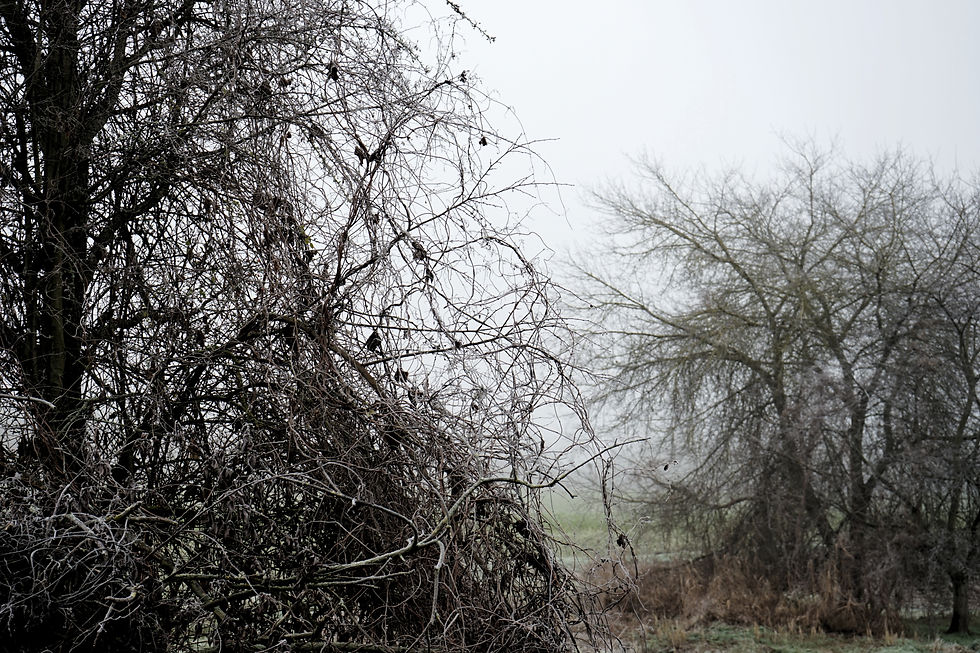Blood
- Jagelsdorf
- Jun 21, 2024
- 4 min read

Most Esteemed Colleague, Dear Jan,
We are informing you about the course of treatment of Mr. Krzysztof Malicki on November 12, 2023.
Diagnosis:
Exitus letalis due to hemorrhagic shock
Chronic Diseases:
Atherosclerosis
Coronary artery disease
Aortocoronary bypass surgery, 11/2023, alio loco
Multiple strokes due to basilar artery occlusion (2007, 2009, 2015, 2022)
Locked-in syndrome
Course of treatment:
Mr. Malicki was admitted to the Emergency Room due to sudden bleeding from a tracheotomy performed elsewhere. The patient was not known to our hospital, and the treatment documentation provided by the paramedics was incomplete. In the ambulance, the patient received an intravenous ampoule of tranexamic acid and inhalations of adrenaline. Upon admission to the ER, the bleeding had significantly subsided due to these interventions.
After the removal of the cannula from the trachea, the bleeding intensified significantly. The on-call anesthesiologist, trauma surgeon, and thoracic surgeon were urgently notified. The patient was transferred to Operating Room No. 7. Sixteen units of universal red blood cell concentrate were prepared.
Initial examination did not reveal an obvious source of the bleeding. In the absence of known neoplastic changes, we ruled out erosive bleeding. From the incomplete medical history, it was deduced that recent aortocoronary bypass surgery, commonly known as a bypass, had been performed. In the absence of other suspicions, we decided to perform a thoracotomy to locate the source of the bleeding. At this point, the suction reservoirs contained approximately five liters of fluid. A distinctive, metallic smell filled the air, and oddly enough, it could also be tasted on the tongue.
The on-call thoracic surgeon, Dr. Niedziela, made a central incision with a scalpel along the entire length of the sternum. Further dissection was performed using a monopolar blade, and the sternum was cut with an oscillating saw. The bleeding increased exponentially after cutting the sternum. The source of the bleeding was still not identifiable; we did not see any open blood vessels. Blood was pouring out of the cut sternum in liters, flowing over the patient and the operating table like a waterfall, quickly leaving the surgical team ankle-deep in the red fluid.
After inserting the chest spreader, the bleeding intensified further, revealing an expansive, unending sea of red. The fully opened chest cavity turned out to be barely a keyhole, or the eye of a needle, compared to the view we encountered inside. The ribs seemed to continue caudally like the vault of a grotesque Gothic cathedral, extending through the abdominal cavity, lower limbs, the operating room, and even further. Adjusting the lighting did not allow us to determine the exact depth of the chest cavity. We were unable to identify the heart, aorta, superior vena cava, lungs, or other orientational structures or organs. The source of the ongoing bleeding was also not apparent.
When the blood pouring from the opened sternum reached halfway up our calves, Dr. Jóźwiak, the on-call trauma surgeon, decided to palpate the inside of the chest cavity. He reached his hand inside. His arm disappeared almost up to the shoulder in the patient. After a few seemingly endless seconds, the operator let out a cry, which could be described as a mixture of triumph and disgust, informing the team that he "had something" and that "it was putting up a good fight." At this point, Dr. Jóźwiak was pulled into the opening, his coat tearing on the ribs protruding like blunt, jagged teeth. Together, the team managed to pull Dr. Jóźwiak out of the patient. In his hand, he held a mass composed of muscle and connective tissue, gently pulsating and writhing in the operator's grip.
This lump was interwoven with numerous torn blood vessels, two to three centimeters wide. The fleshy tubes protruded in every direction, moving slightly as if looking around and searching for something in the room. In the areas where the vessels were torn closer to the mass, the sight resembled a grotesque Swiss cheese. Inspecting these openings gave the impression that they led to an endless void, the depths of nothingness itself. Waterfalls of blood poured out, drenching the operator in further liters of sticky, thick blood. The bleeding stopped after making several deep cuts into the held mass with a scalpel. The movements of the lump also ceased.
The chest bleeding stopped shortly after the mass was removed. At the same time, there was a rapidly progressing bradycardia followed by a cessation of circulation. Attempts to restore circulation with catecholamines and electrical cardioversion were unsuccessful. We regret to pronounce the death of Mr. Malicki on November 12, 2023, at 23:14.
Histopathological examination of the mass did not show cancerous changes. We identified heart muscle cells with blood vessels, but the exact dimensions or number of vessels could not be determined.
The post-accident team did not find any permanent health damage in Dr. Jóźwiak. The incident protocol was drawn up and handed over to the responsible authorities.
Sincerely,
Prof. Dr M. Juszczyk
Head of the Trauma Surgery Clinic
Dr M. Jóźwiak
Traumatologist
M.A.G. Jagielski
Resident

コメント